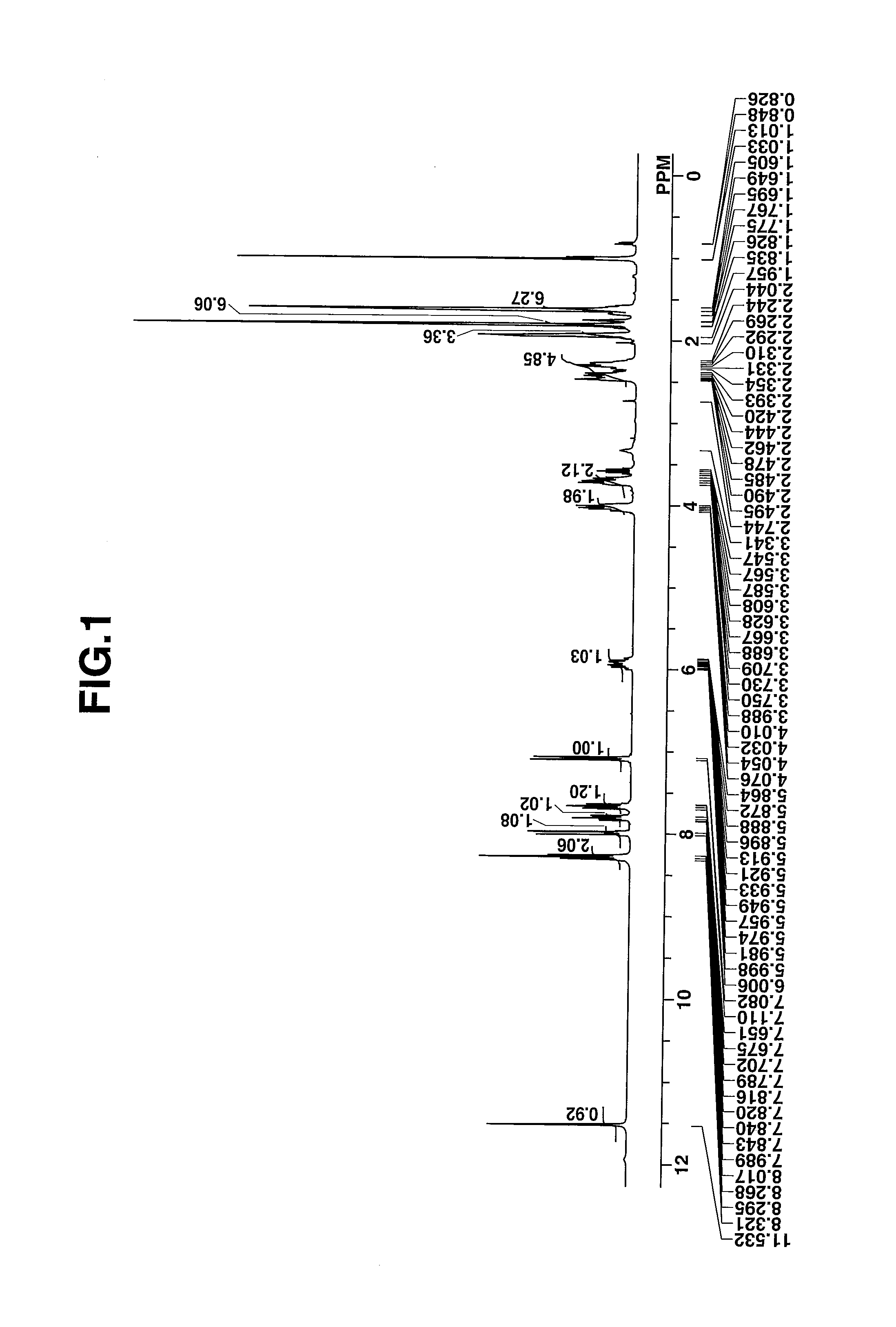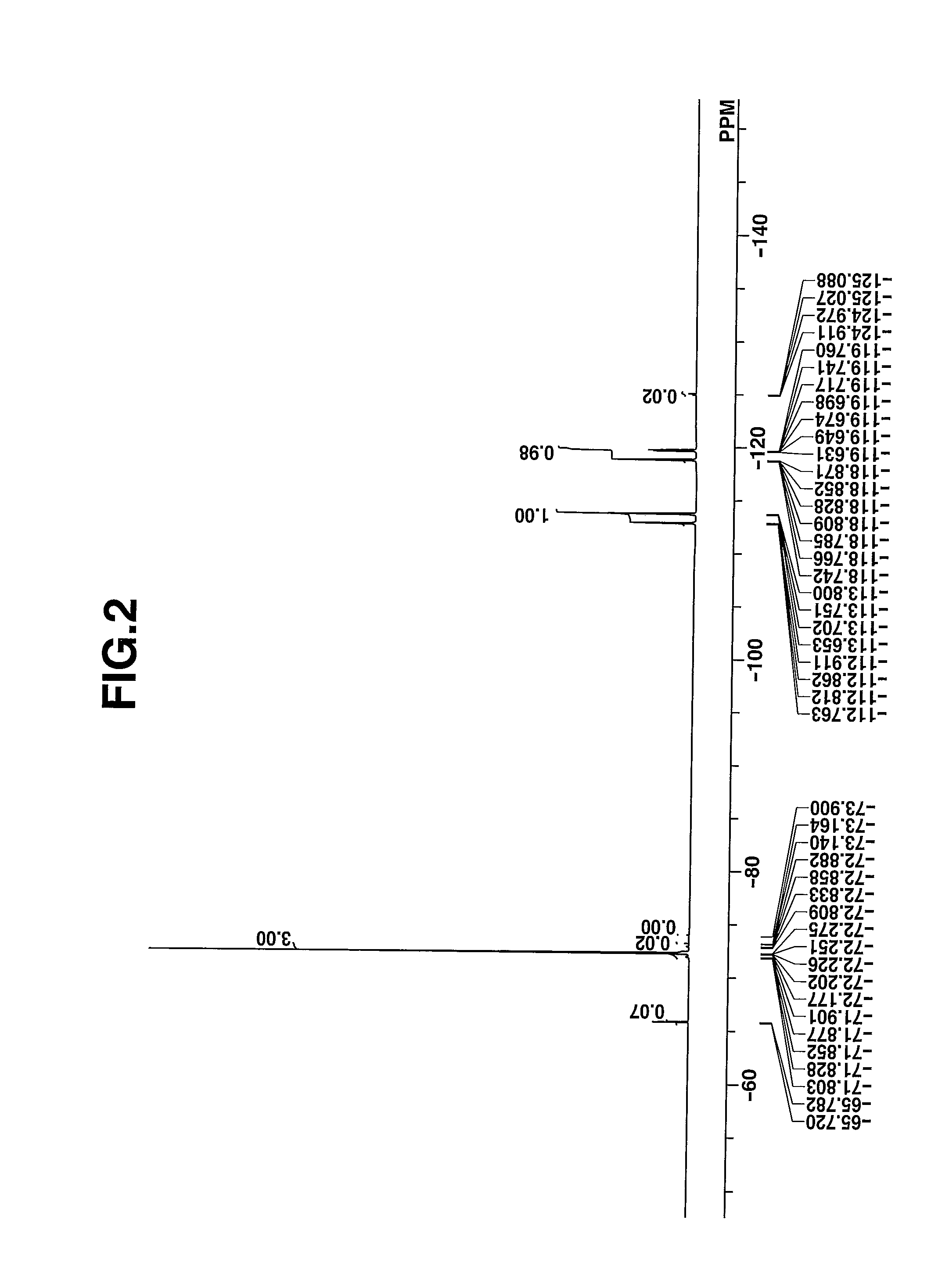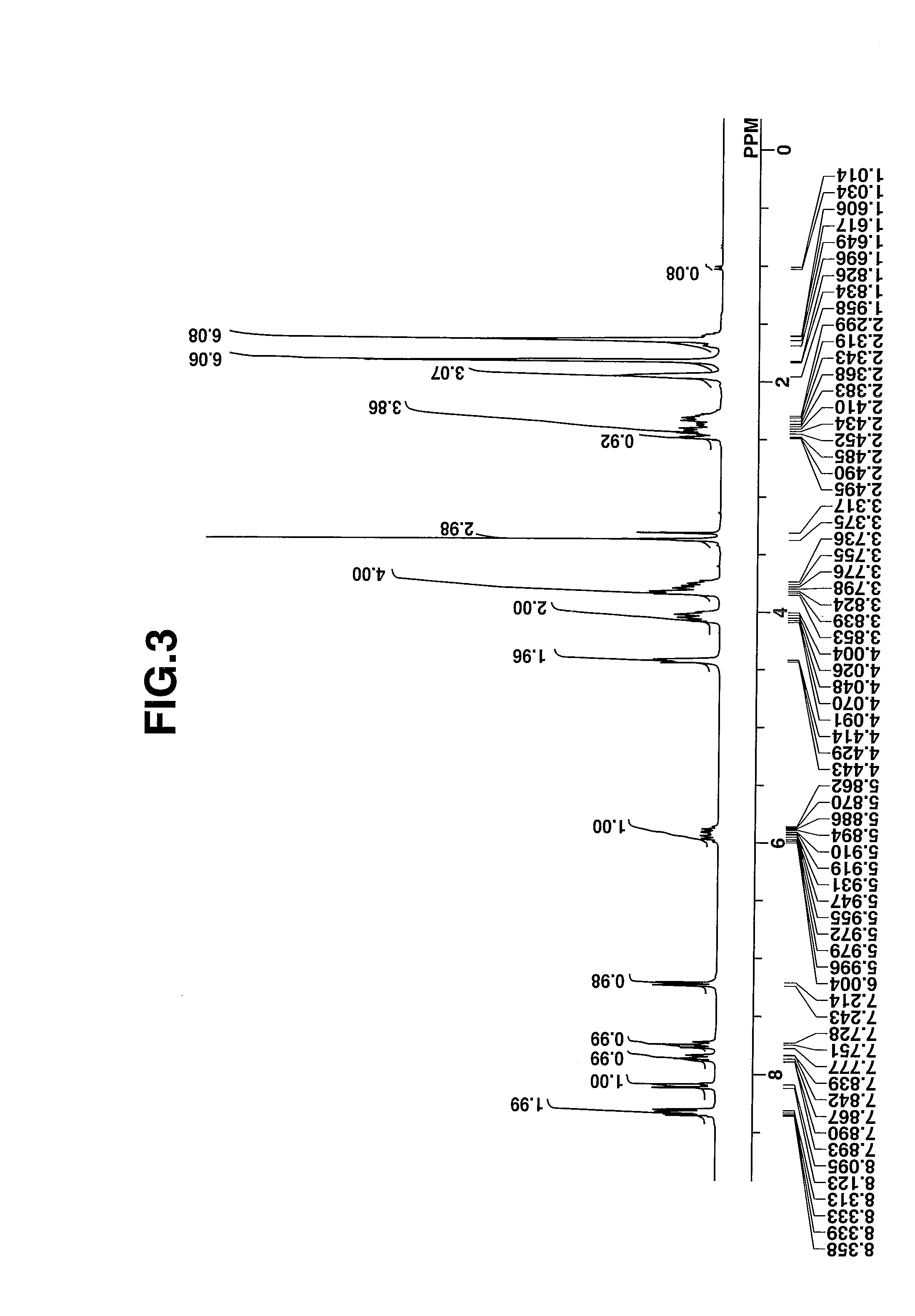Sulfonium salt, resist composition, and patterning process
a technology of resist composition and sulfonium salt, which is applied in the direction of photosensitive materials, instruments, photomechanical equipment, etc., can solve the problems of low resolution, technology still needs a resist material, and several development delays, so as to reduce pattern dependence and restrict the dissolution in the immersion water
- Summary
- Abstract
- Description
- Claims
- Application Information
AI Technical Summary
Benefits of technology
Problems solved by technology
Method used
Image
Examples
synthesis example 1
Synthesis of 4-hydroxynaphthyl-1-tetrahydrothiophenium chloride
[0072]In 50 g of methanol were dissolved 10 g (0.069 mol) of 1-naphthol and 7.2 g (0.069 mol) of tetramethylene sulfoxide. The solution was cooled to −16° C. An excess of hydrogen chloride gas was fed to the solution at a temperature below 20° C. Nitrogen gas was bubbled to expel the excess of hydrogen chloride. The reaction solution was concentrated and combined with water and diisopropyl ether, from which a water layer was separated. It was an aqueous solution of 4-hydroxynaphthyl-1-tetrahydrothiophenium chloride. This aqueous solution was used in the subsequent step without further isolation.
synthesis example 2
Synthesis of 4-hydroxynaphthyl-1-tetrahydrothiophenium 2-(adamantane-1-carbonyloxy)-1,1,3,3,3-pentafluoropropane-sulfonate (PAG-1)
[0073]An aqueous solution of sodium 1,1,3,3,3-pentafluoro-2-(adamantane-1-carbonyloxy)propanesulfonate (corresponding to 0.021 mol) synthesized according to the formulation described in JP-A 2007-145797 was mixed with the aqueous solution of 4-hydroxynaphthyl-1-tetrahydrothiophenium chloride (corresponding to 0.023 mol) synthesized in Synthesis Example 1. The mixture was extracted with 100 g of dichloromethane and 50 g of methyl isobutyl ketone. The organic layer was washed with water, and the solvent was distilled off in vacuum. The residue was poured into isopropyl ether for crystallization, filtered and dried, obtaining the target compound. White crystal, 6.2 g, yield 43%.
[0074]The target compound was analyzed by spectroscopy. The data of infrared (IR) absorption spectroscopy are shown below. The NMR spectra, 1H-NMR and 19F-NMR in DMSO-d6 are shown in ...
synthesis example 3
Synthesis of 1-(2-methoxyethoxy)naphthalene
[0077]In 100 g of ethanol were dissolved 50.0 g (0.347 mol) of 1-naphthol, 34.4 g (0.364 mol) of 2-methoxyethyl chloride, 14.6 g (0.365 mol) of sodium hydroxide, and 2.6 g (0.017 mol) of sodium iodide. The solution was heated and stirred at 80° C. for 8 hours. After cooling, the solution was combined with 100 g of water and 200 g of toluene, from which an organic layer was separated. It was washed 5 times with 100 g of 5 wt % sodium hydroxide aqueous solution and then 4 times with 100 g of water. The organic layer was concentrated, obtaining 45 g of oily matter. On vacuum distillation (110° C. / 13 Pa), 41 g of the target compound was recovered (yield 58%).
PUM
| Property | Measurement | Unit |
|---|---|---|
| feature size | aaaaa | aaaaa |
| temperature | aaaaa | aaaaa |
| temperature | aaaaa | aaaaa |
Abstract
Description
Claims
Application Information
 Login to View More
Login to View More - R&D
- Intellectual Property
- Life Sciences
- Materials
- Tech Scout
- Unparalleled Data Quality
- Higher Quality Content
- 60% Fewer Hallucinations
Browse by: Latest US Patents, China's latest patents, Technical Efficacy Thesaurus, Application Domain, Technology Topic, Popular Technical Reports.
© 2025 PatSnap. All rights reserved.Legal|Privacy policy|Modern Slavery Act Transparency Statement|Sitemap|About US| Contact US: help@patsnap.com



